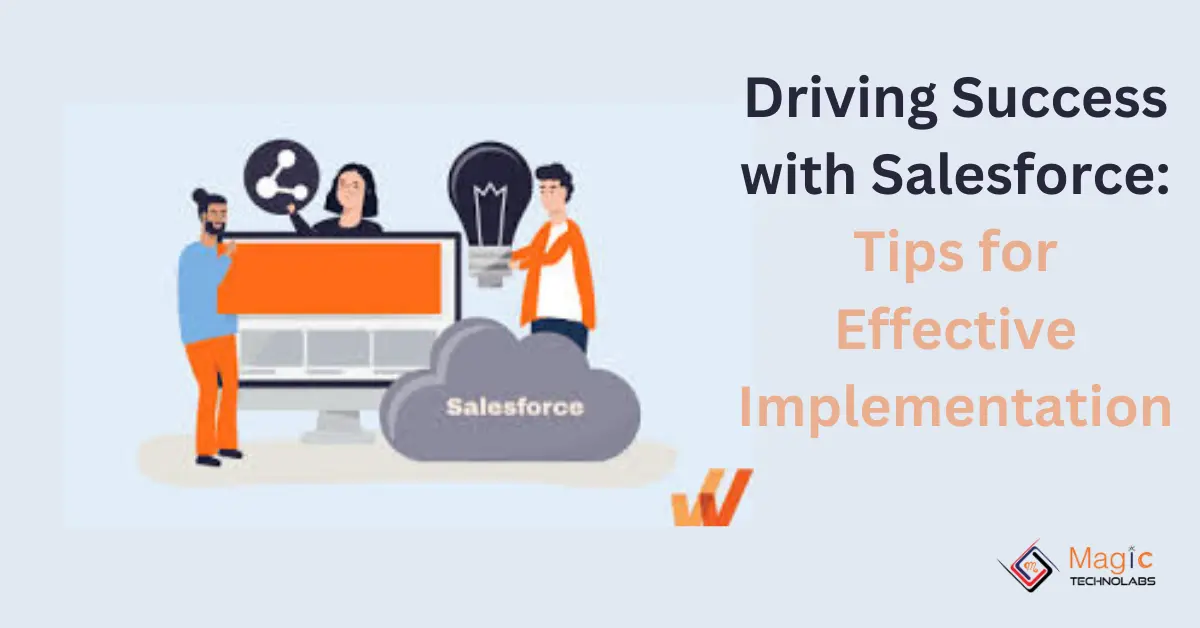Implementing Salesforce is a pivotal step for businesses aiming to streamline operations, boost sales, and enhance customer relationships. However, effective implementation requires careful planning, strategy, and execution. Here are some essential tips to drive success with Salesforce:
1. Define Clear Objectives: Before diving into Salesforce implementation, it's crucial to define clear objectives and goals. Identify what you aim to achieve with Salesforce, whether it's improving sales efficiency, enhancing customer service, or increasing revenue. Having defined objectives will guide the implementation process and ensure alignment with your business priorities.
2. Engage Stakeholders: Involve key stakeholders from various departments in the implementation process, including sales, marketing, customer service, and IT. Gather input and feedback from stakeholders to understand their requirements, challenges, and expectations. Engaging stakeholders early on fosters buy-in and ensures that Salesforce meets the needs of all users.
3. Customize to Fit Your Business: Salesforce offers extensive customization capabilities to tailor the platform to your business processes and workflows. Take advantage of custom objects, fields, and layouts to configure Salesforce according to your unique requirements. Map out your sales and customer service processes and design Salesforce to support them effectively.
4. Provide Comprehensive Training: Invest in comprehensive training for users to ensure they understand how to leverage Salesforce effectively. Offer hands-on training sessions, online tutorials, and documentation to familiarize users with Salesforce's features and functionalities. Training should be ongoing to support users as they adapt to the new system.
5. Focus on Data Quality: Maintaining clean and accurate data is essential for maximizing the value of Salesforce. Develop data management best practices and establish data quality standards from the outset. Implement data validation rules, deduplication processes, and regular data hygiene routines to ensure data integrity within Salesforce.
6. Monitor and Iterate: Continuous monitoring and iteration are key to optimizing Salesforce usage and driving ongoing success. Monitor key performance indicators (KPIs), user adoption rates, and feedback to identify areas for improvement. Iterate on your implementation strategy based on insights gained from user experience and performance metrics.
By following these tips for effective Salesforce implementation, businesses can drive success, increase productivity, and achieve their business objectives. With careful planning, stakeholder engagement, customization, training, data management, and ongoing monitoring, Salesforce can become a powerful tool for driving growth and innovation.
















